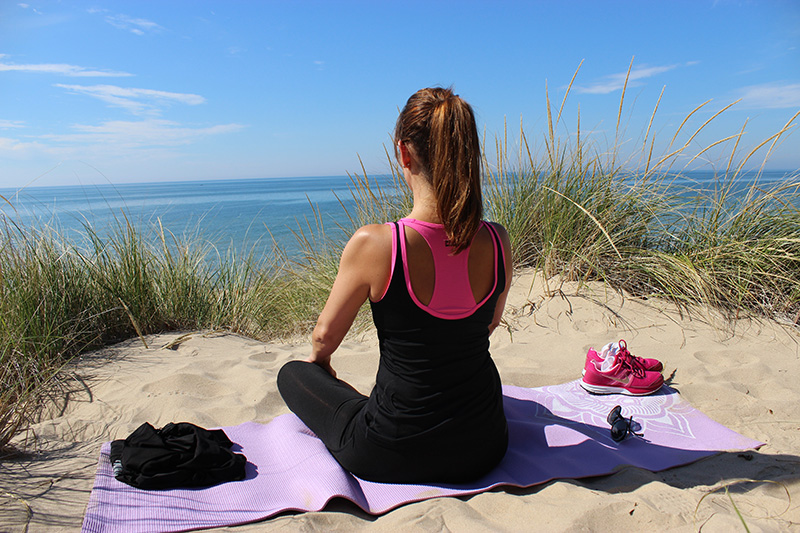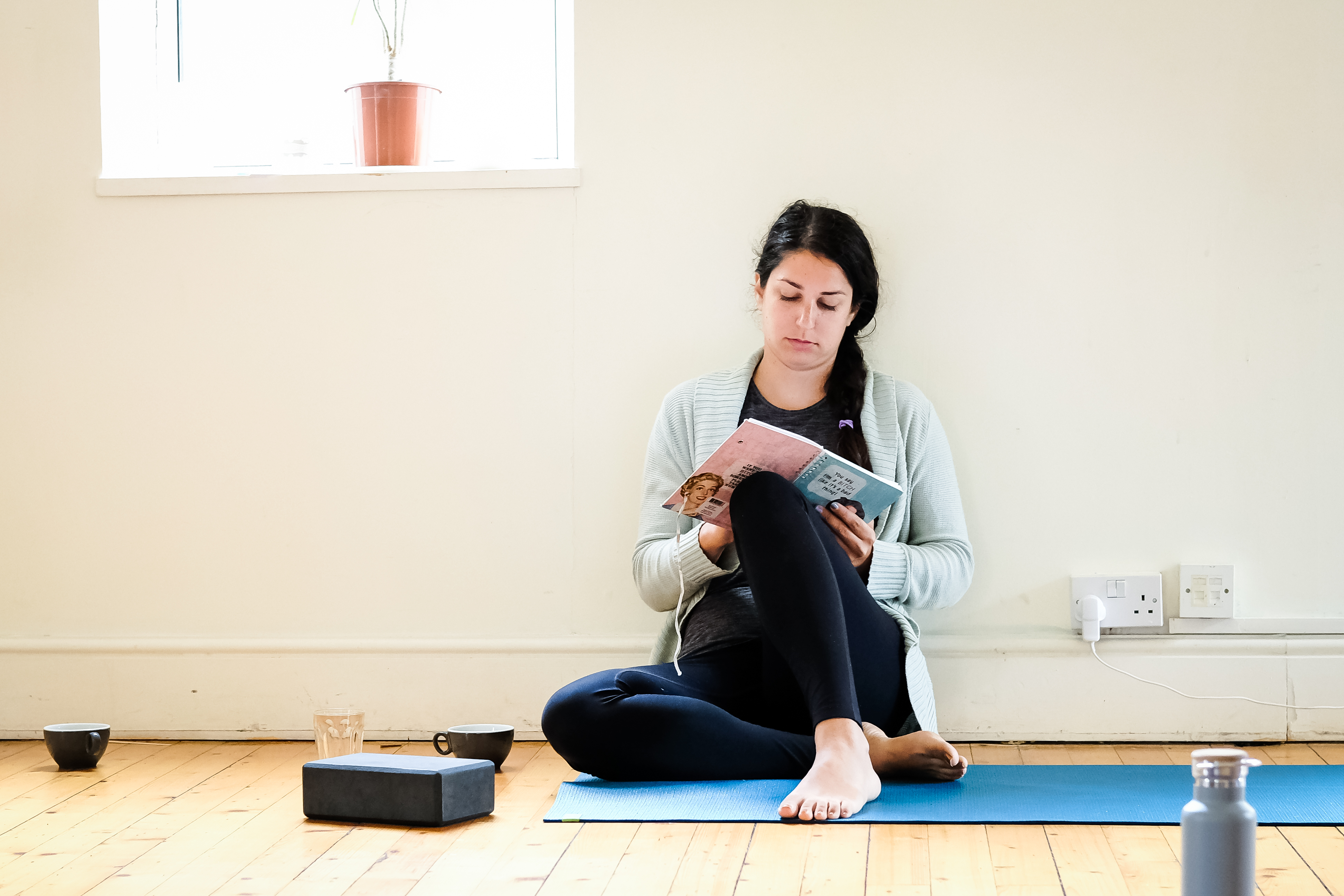Have you heard about mindfulness? The hype around mindfulness is filling our news feeds with promises of better health and quality of life. So what is mindfulness, how is it different from meditation, and how can it help you live a healthier and happier life?
Mindfulness touts many benefits, such as increasing productivity, increasing immune function, and relieving chronic pain. Just a quick read over the mindfulness literature can convince you it is a worthwhile pursuit. But mindfulness is about the practice, not the theory, so in this post, I'll take a deep dive into what mindfulness is and how you can use it to improve your health.
What Is Mindfulness And Why Is It Important?
Mindfulness means being in the present moment. While it is often linked with meditation, you don’t have to be meditating to practice mindfulness. You can walk mindfully, eat mindfully, speak mindfully, etc. Seems simple, right? But how do we actually stay in the present moment? There are a few "rules" to help you practice mindfulness, but I like to think of them more as guidelines than rules. Focusing on incorporating these principles into your life can help you enjoy your days more, and can also aid your recovery from chronic illness. The guidelines are:
- Paying attention
- Directing focus
- Beginner's mind
- Non- judgement
- Non- striving
Paying Attention
When is the last time you asked someone their name and didn’t listen to the answer? How often have you looked at your phone for the time and then immediately forgot?
Mindfulness is paying attention to what is happening in each moment. When you ask someone their name, the only thing in the world that matters to you is their name. Whether you are discovering a cure for cancer or watering your neighbour's plants, what you are doing, at that moment is what your mind should also focus on.

Often, while we are doing daily tasks like getting dressed or cooking dinner, our minds are somewhere else. Paying attention in a mindful way means you may notice the smells of each spice you add, the steam rising from the pan and hitting your face, and the texture of the spatula touching your dinner as you flip it over in the pan. Our minds are so used to wandering that paying attention as this does is not always easy, which brings us to our next point: directing focus.
Directing Focus
Learning how to pay attention and be fully present in the moment takes time to cultivate. It’s rare to decide one day that you would like to live in the moment and then fail to be distracted by anything ever again.
Directing your focus is becoming aware of when your attention starts to wander and choosing to reign your focus back to the present. Everyone's mind will wander, no matter how experienced or zen the meditator seems. It's part of being human.
Mindfulness is not about clearing your mind, but about choosing to direct your focus to something specific. If you ask someone their name and notice your mind wander to what you are cooking for dinner that night, acknowledge that thought, choose to focus back on the person and ask them to repeat their name with a determination to give them your complete attention.
Beginner's Mind As A Mindfulness Benefit
Do you remember the first time you ate chocolate? How about the first time you threw a ball or learned how to draw a shape? Do you remember how different those experiences were to how you now do those things?
Eating our favourite foods or participating in our favourite hobbies comes so easy to us now that we don’t always experience it fully. When practising mindfulness, we try to experience each moment as if it is the first time it is happening. If you have a child, you know how, as children are learning, they throw their complete focus into things like getting dressed, eating, tying their shoes, or packing their school bag. Next time you sit down to a meal, imagine it is the first time you are trying each food. Notice how the entire meal changes. You can apply this to any task to your day, and suddenly mundane things will become much more interesting. Practising a beginners mind helps you pay attention to each moment.
Non-Judgement
This applies not only to judging others but judging yourself and experiences as well. It is hard to appreciate experiences when we are constantly evaluating them. Hoping for good weather diminishes your chances of enjoying splashing through puddles in the rain.
Judging experiences takes away from what is actually happening in the current moment. The adjectives “good” or “bad” don’t really describe anything about the situation. For example, a piece of cake doesn’t taste “good”. It might taste sweet or sugary, it might fizzle on your tongue or melt in your mouth, or it may prompt your gag reflex. Paying attention to the real taste of the cake helps you become more aware. It also enriches your experiences and helps you understand them better.

Many people struggle with non-judgement, as we are taught to judge from a young age. Try practising non-judgement with the people around you and with your day to day experiences. Instead of saying the weather is bad, try changing the story in your head. Is it really windy out? Is the cold making your ears hurt? Is the rain soaking through your coat? And what does it feel like to go inside after? Do your ears slowly defrost? Do dry clothes feel soft and warm? Try changing the story you tell yourself about things. They don’t need to be great or terrible, they are what they are.
Non-Striving As A Mindfulness Technique
Non-striving means placing more importance on process than on results. For example, in mindfulness you do not strive or set a goal to become healthy, to run a marathon, or to get your dream job. You set a goal to cook healthier meals, run/walk three times a week, and set aside time to write a cover letter.
We know that we can’t control the outcomes of our actions, or of our lives, and yet that does not stop us from trying. This is a fruitless endeavour that can destroy confidence and happiness. Set goals for what you can control, not for an outcome that you have no influence over.
We can’t will ourselves to heal from illness. We can’t force our bodies to run marathons. We can’t make anyone hire us. But we can control what we choose to do, for example choosing healthier meals, or making an intention to practice running, even if it’s only for a few minutes at a time. Setting goals in this way also allows you to enjoy the process. You can enjoy preparing a healthy meal, without fantasising about losing weight, and can enjoy a stroll through the park without criticising the time it takes you to do it.
How Do I Start Being Mindful?
There are several exercises you can do to try mindfulness practices in your own life. One of my favourite mindfulness exercises is mindful eating! Try this mindful eating exercise from the University Of West Virginia. All you need is one raisin.
Holding
First, take a raisin and hold it in the palm of your hand or between your finger and thumb. Focusing on it, imagine that you’ve just dropped in from Mars and have never seen an object like this before in your life.
Seeing
Take time to really see it; gaze at the raisin with care and full attention. Let your eyes explore every part of it, examining the highlights where the light shines, the darker hollows, the folds and ridges, and any asymmetries or unique features.
Touching
Turn the raisin over between your fingers, exploring its texture, maybe with your eyes closed if that enhances your sense of touch.
Smelling
Holding the raisin beneath your nose, with each inhalation drink in any smell, aroma, or fragrance that may arise, noticing as you do this anything interesting that may be happening in your mouth or stomach.
Placing
Now slowly bring the raisin up to your lips, noticing how your hand and arm know exactly how and where to position it. Gently place the object in the mouth, without chewing, noticing how it gets into the mouth in the first place. Spend a few moments exploring the sensations of having it in your mouth, exploring it with your tongue.
Tasting
When you are ready, prepare to chew the raisin, noticing how and where it needs to be for chewing. Then, very consciously, take one or two bites ito it and notice what happens in the aftermath, experiencing any waves of taste that emanate from it as you continue chewing. Without swallowing yet, notice the bare sensations of taste and texture in the mouth and how these may change over time, moment by moment, as well as any changes in the object itself.
Swallowing
When you feel ready to swallow the raisin, see if you can first detect the intention to swallow as it comes up, so that even this is experienced consciously before you actually swallow the raisin. Following Finally, see if you can feel what is left of the raisin moving down into your stomach, and sense how the body as a whole is feeling after completing this exercise in mindful eating
That's it! To learn more about how mindfulness benefits your life and health, read Can Yoga and Mindfulness Help Manage Chronic Pain?
Still have questions? Post them in the comments and the community can help!









4 Responses